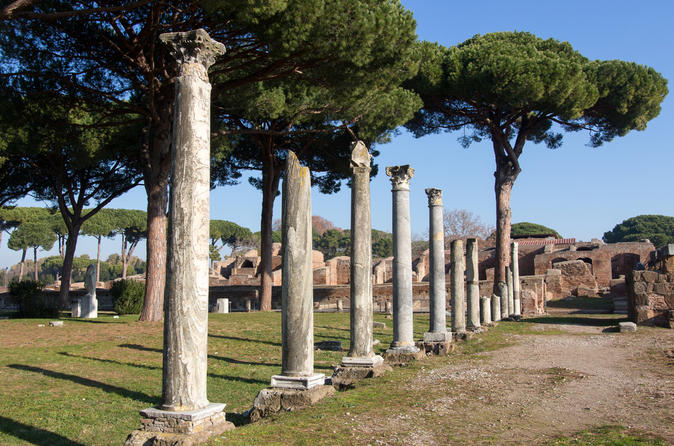Filter by Duration
Filter by Rating
Filter by Price
Showing 1 to 18 of 36 Offers

Ostia Antica Half-Day Tour from Rome by Train
205 Reviews
4.0 hour
$64
Catch the train from Rome to the former harbor town of the imperial city on a 4-hour tour of Ostia A...
Offered by Get Your Guide

Ostia Antica: Archaeological Park Entry Ticket and Pemcards
116 Reviews
$22
Discover the ancient Roman city of Ostia Antica with an entry ticket to this archaeological site. Ex...
Offered by Get Your Guide

Ostia Antica Guided Tour with Local Archaeologist
20 Reviews
3 hour
$146
Want to visit a real ancient town in Rome and see how cities were built during the Roman Empire? Don...
Offered by Get Your Guide

Ostia Antica Half-Day Tour from Rome
19 Reviews
4 hour
$72
Discover the former harbor city of Ancient Rome on a 4-hour coach tour to the ruins of Ostia Antica,...
Offered by Get Your Guide

From Rome: Ostia Antica 4-Hour Guided Tour
14 Reviews
4.5 hour
$480
Discover the ancient port of Rome and its ruins on a guided tour of Ostia Antica, just a 20-minute t...
Offered by Get Your Guide

Rome: Skip-the-line Ostia Antica Guided Tour
2 Reviews
3 hour
$96
Enjoy Ostia Antica on this 3-hour private tour with a licensed guide just for you. See the warm show...
Offered by Get Your Guide

Rome: Ostia Antica Guided Tour in German with Tickets
2 Reviews
2.0 hour
$76
Explore the archaeological site of Ostia Antica, a once-powerful Roman city. Join a guided tour with...
Offered by Get Your Guide

Rome: Ostia Antica Half Day Small Group Tour with Guide
2 Reviews
2.5 hour
$118
Travel back in time on this visit to the one of the most powerful trade and commerce sites of the Ro...
Offered by Get Your Guide

Rome: Beyond Ostia Antica, Vineyard & Castel Gandolfo Tour
1 Reviews
10 hour
$163
For many years, the Castelli Romani region of southeastern Rome has been a refuge for those who want...
Offered by Get Your Guide
Offered by Viator

Classic Car Tour of Rome and Ostia seaside, including Light Lunch and Guided Ostia Antica Site
No Reviews
6 to 7 hrs
$239
...
Offered by Viator

Ostia Antica Half Day Small Group Tour with Train - Rome's Ancient Harbor City
No Reviews
4 hours
$154
...
Offered by Viator

Ostia Antica from Rome
No Reviews
4 hour
$234
Visit Ostia Antica, a stunningly preserved and ancient Roman city....
Offered by Get Your Guide
Offered by Viator

Ostia Antica by Electric Bike - Include Guided Tour of Ancient Roman Port & City
No Reviews
7 hours
$179
...
Offered by Viator
Offered by Viator

Private Guided Tour of Ostia Antica Archaeological Site with Alessandra!
No Reviews
3 hours
$114
Mobile Voucher Accepted
Discover the archeological ruins of Romes ancient harbor city Ostia Antica on this 3-hour private...
Offered by Viator

Rome: Ostia Antica Private Tour with Expert Guide
No Reviews
4 hour
$51
Discover the Ancient Roman seaport of Ostia Antica, known for its immaculately preserved buildings, ...
Offered by Get Your Guide













